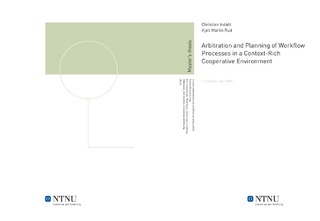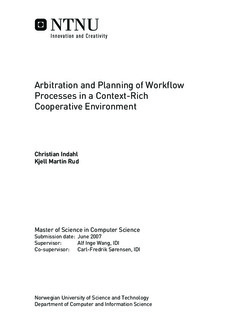| dc.description.abstract | Hardware has come a long way to support pervasive computing and workflow management, whilst software has fallen behind. Existing systems lack the ability to make decisions that corresponds with user intents and are unable to handle complex context-rich workflow conflicts. Since workflow systems are meant to facilitate normal workers, we have looked at how workflows can be generated and adapted without prior knowledge of programming. The approach is based on the elaboration of so called calm technologies, bringing user interference to a minimum. We propose ways of automating the process of obtaining context, generating workflows, making plans, and schedule resources before execution. Obtaining context is proposed done by a Context service which delivers tailored context information through abstraction. To create workflows, the only thing a user needs to know is what he wants to achieve. The rest is generated. The planning mechanism used is the Scheduling service first proposed in our depth study. As a part of this, we describe a method for how to simulate future context for better planning purposes, decreasing the need for adaption and replanning caused by context changes. When several actors execute workflows in an environment, conflicts will occur. We have made a proof-of-concept implementation of the Arbitration architecture from our depth study. This approach used case-based reasoning to recognise conflicts between workflows and select a solution. We set out to find a way to store a conflict representation as a CBR-case so it can be recognised in a different context and enable the service to recognise conflicts that are similar in nature. We found that a case could be stored using ontologies to describe the nature of the workflow constituents that make up the conflict. In addition, context and state triggers are proposed. These filter the cases that can not be conflicts, due to current contextual information or other states, before the CBR framework computes similarity of the cases against the current workflows. Using an expert system supporting fuzzy logic, it could speed up the similarity computations required to recognise conflicts. After running some scenarios, we found that the system was able to detect known conflicts in a different context and discover prior unknown. This was achieved because of the similarity in nature to a known conflict. | nb_NO |

